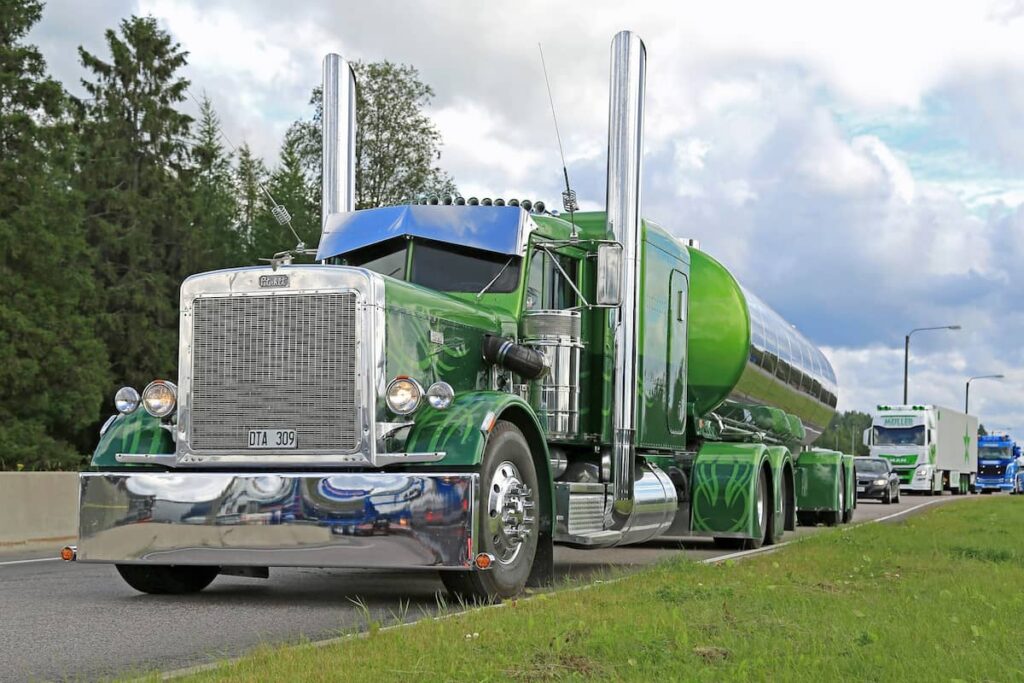An Uber For Moving Furniture and Things
Table of contents
Table of contents

If you live in Hong Kong, the taxi drivers have rules about how much stuff you’re allowed to bring with you, including rules about transporting pets. That’s because a lot of people in Hong Kong could probably fit a good chunk of what they own in a taxi. When you live in one of the most expensive places in the world, space becomes a valuable commodity, and you learn to live with less stuff. On the other end of the spectrum, you have countries where everyone has loads of space, like ‘Murica.
With 300,000 items per household, Americans have so much crap that they actually need to rent external storage facilities to house it all. In fact, the estimated 55,000 self storage units in ‘Murica have enough collective space to house every single citizen of the country, allocating each of them a modest 7 square feet living area, about the size of a Hong Kong bedroom. When it comes to moving an American household, you can’t really use an Uber for moving furniture and things. Instead, moving usually involves renting a massive “U-Haul truck” if you do it yourself, or paying some mover to pack up all 300,000 things you own and then unpack them in another location. It’s also very expensive:
The American Moving and Storage Association states that the average cost of an interstate household move is about $4,300 (distance of 1,225 miles) and the average cost of an intrastate move is about $2,300 (4 movers at $200 per hour)
According to the American Moving & Storage Association, there are 7,000 companies operating at 13,900 locations primarily providing moving and storage services. The industry employs 122,600 people with an annual payroll of $3.6 billion, 47.8% of industry companies employ fewer than 5 people. Sounds a whole lot like the trucking industry, and that’s why Convoy was so successful in developing their app alongside all the other startups trying to become the Uber of trucking. Now, another startup has taken notice of a fragmented industry that’s dying for an “Uber-like” technology solution. The Uber for moving furniture and things is an app called Bellhops.
An Uber For Moving Furniture and Things
Founded in 2013, Tennessee startup Bellhops has taken in $58.6 million in funding to transform the $18 billion moving industry with “an asset-light model powered by tech to deliver untouchable prices and customer experiences.” More than half of that funding came in the form of a Series C round of $31.4 million that closed just last week. The company’s business model is remarkably simple. They match movers, people who are willing to work for X to Y dollars an hour with trucks and people who need things moved. With no bricks-and-mortar outlets to spend money on, savings get passed to the customer who pays about $40 an hour for a mover as opposed to several hundred dollars. That’s according to an article by the Tennessean which goes on to say that “Bellhops’ largest demographic is ages 18 to 34, a group that moves frequently to chase jobs, degrees, and new neighborhoods.”
The company’s CEO, Luke Marklin, was previously a general manager at Uber and oversaw the success of its business operations in several markets throughout the Southeast. That experience is paying off as the company works to quickly expand across the rest of the United States. Here’s where they operate currently:

As for pricing, the solution is cheap-as-chips. The state where the most people are exiting these days is Illinois, and to move a family of four out of Chiraq to some other place where you’re less likely to get gunned down, your flight-to-safety will cost just around $625:

Ditto for the other 31 cities that Bellhop operates in right now. And you can bet that number is going to expand following their latest funding round. Bellhops is rapidly approaching its 200,000th move and says that more than 20% of its customers use the services for multiple needs within a given year—a previously unheard-of occurrence in the moving space. That’s because they not only do interstate and intrastate moves, but one-off jobs as well. If you need some strapping young lads around the house, give them a buzz.

They can help with any at-home projects you might have such as moving porch furniture, reorganizing your garage, or setting up in preparation for a party or wedding. While the moving industry standard for minimum notice is five days, if they have availability, Bellhops can schedule moves with as little as one day’s notice.
Conclusion
The “on-demand economy” hasn’t quite exhausted itself just yet, and we’re surprised to see companies like Bellhop and Convoy are still finding niches to innovate where they’re moving quickly to become the dominant player. If you’re a freshly-minted MBA, you might look for other industries that are extremely fragmented, where a technology solution could pull everything together. If you’re an international MBA graduate, consider duplicating someone else’s successful business model in your own country. It all comes down to using technology to run things more efficiently, something that fragmented industries are unable to do because small players can’t exactly afford to make the investments needed.
Sign up to our newsletter to get more of our great research delivered straight to your inbox!
Nanalyze Weekly includes useful insights written by our team of underpaid MBAs, research on new disruptive technology stocks flying under the radar, and summaries of our recent research. Always 100% free.














